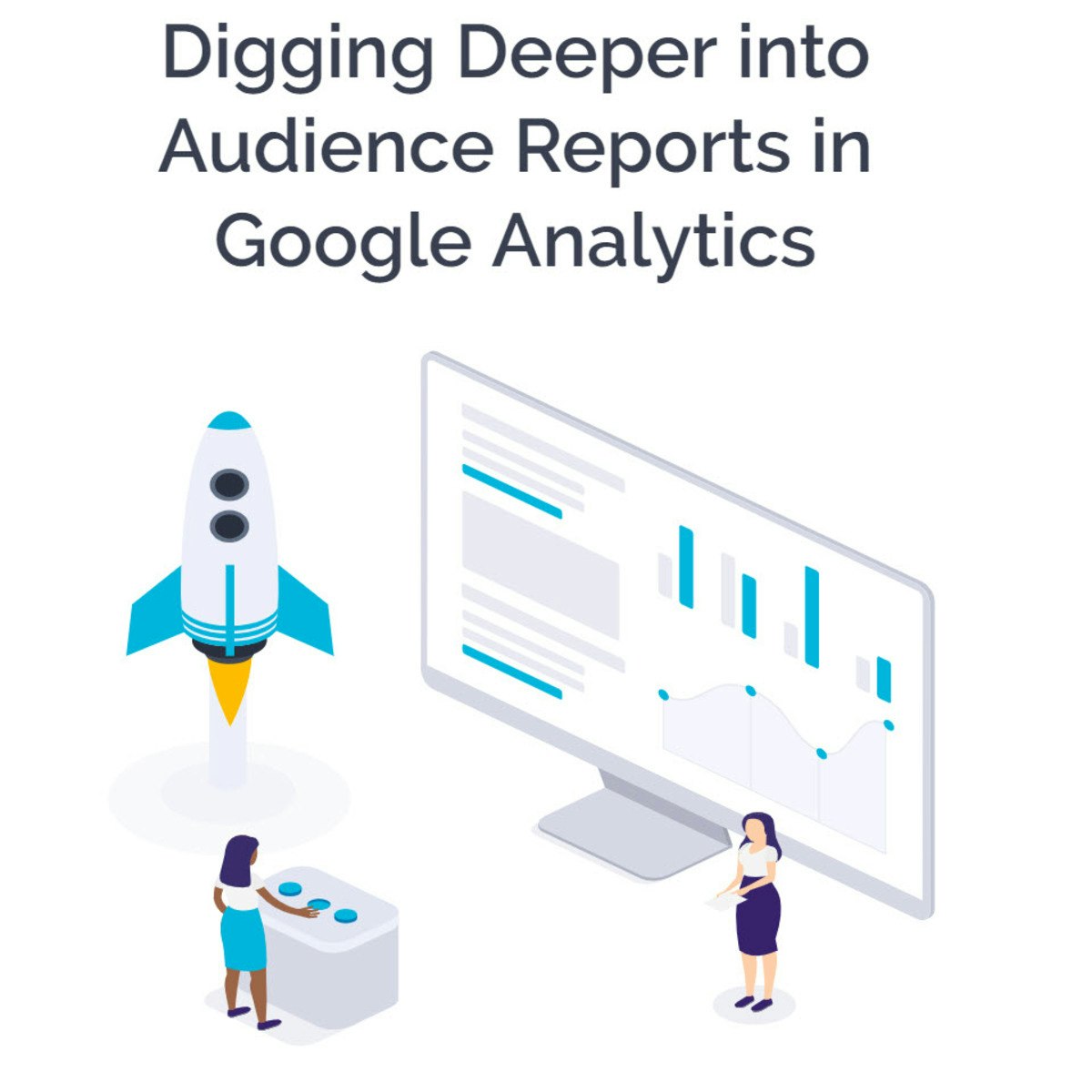Growth Hacker
Growth Hacker: A Comprehensive Career Guide
A Growth Hacker is a professional singularly focused on one thing: growth. Often working within startups or tech-focused companies, they employ a blend of marketing savvy, data analysis, and technical skills to rapidly expand a company's user base or revenue. Think of them as scientists of customer acquisition and retention, constantly experimenting to find the most efficient ways to scale a business.
What makes this role exciting? Growth Hackers operate at the intersection of creativity and analytics. They get to design clever experiments, test unconventional ideas, and see the direct impact of their work on a company's trajectory. The fast-paced nature means constantly learning and adapting, using data not just to report, but to actively shape strategy and product development for maximum impact.
Overview of Growth Hacker
Defining the Role and Its Goals
At its heart, growth hacking is a process dedicated to achieving rapid and efficient business growth, primarily through user acquisition, activation, retention, and monetization. A Growth Hacker’s core objective is to identify the most effective strategies to attract and keep customers, often with limited resources. They look beyond traditional marketing channels and tactics, seeking innovative and scalable methods.
Their focus is relentlessly data-driven. Success isn't measured by brand awareness alone, but by tangible metrics directly tied to growth, such as conversion rates, user engagement levels, customer lifetime value (LTV), and customer acquisition cost (CAC). They constantly analyze performance data to understand what works and quickly discard what doesn’t, iterating towards more effective solutions.
This role often involves a deep understanding of the entire customer journey, from the first touchpoint to long-term loyalty and advocacy. Growth Hackers aim to optimize every stage of this journey to maximize growth potential, making data-informed decisions to refine product features, marketing messages, and user experiences.
Distinctions from Traditional Marketing
While Growth Hackers share goals with traditional marketers, their approach differs significantly. Traditional marketing often focuses on broader objectives like brand building, market positioning, and managing larger, longer-term campaigns across established channels. Budgets might be substantial, and the focus may be on awareness or sentiment rather than purely quantifiable growth metrics.
Growth Hackers, particularly in startup environments, often operate with leaner budgets and shorter timelines. Their focus is narrower and more intense: find scalable growth quickly. This necessitates a mindset centered around experimentation, utilizing rapid A/B testing, data analysis, and creative, sometimes unconventional tactics. They are deeply involved in the entire customer funnel, not just the top (awareness and acquisition).
Furthermore, Growth Hackers often possess a more technical skillset than many traditional marketers. They might be comfortable with coding, data analysis tools, API integrations, and product analytics platforms. This technical fluency allows them to implement and track experiments more autonomously and delve deeper into user behavior data. The role often blurs the lines between marketing, product development, and data analysis.
Understanding these differences can be helpful when considering career paths. Explore related roles to see which aligns best with your interests.
The Evolution of Growth Hacking
The concept of "growth hacking" emerged in the late 2000s, coined by Sean Ellis in 2010. It arose primarily within the Silicon Valley startup ecosystem, driven by the need for early-stage companies to achieve massive scale quickly with limited resources. Early examples, like Dropbox's referral program or Airbnb's integration with Craigslist, showcased how clever, product-integrated strategies could drive exponential user growth.
Initially, the role was often seen as a hybrid between a marketer and a coder. The focus was on finding ingenious "hacks"—often technical—to tap into existing platforms or user behaviors for rapid acquisition. This required a unique blend of technical proficiency, marketing intuition, and analytical rigor.
Over time, growth hacking has matured beyond just startups and clever tricks. Larger corporations now adopt growth methodologies, establishing dedicated growth teams. The focus has broadened from solely acquisition to encompass the entire customer lifecycle, emphasizing retention and monetization as crucial levers for sustainable growth. While the experimental, data-driven core remains, the field now incorporates a wider range of strategic thinking and cross-functional collaboration.
The rise of sophisticated analytics platforms, marketing automation tools, and AI has further shaped the evolution of growth hacking. These technologies enable more complex experimentation, deeper user understanding, and hyper-personalization at scale, continually redefining the possibilities for driving growth.
Role and Key Concepts
The AARRR Framework: Mapping the Customer Journey
A cornerstone concept in growth hacking is the AARRR framework, often called "Pirate Metrics" (because saying "AARRR" out loud sounds like a pirate). Developed by Dave McClure, founder of 500 Startups, it provides a model for understanding and optimizing the customer lifecycle through five key stages: Acquisition, Activation, Retention, Referral, and Revenue.
Acquisition: How do users find you? This stage covers all the channels through which potential customers discover your product or service, such as SEO, social media, paid ads, content marketing, or word-of-mouth.
Activation: Do users have a great first experience? This is about the user's initial engagement and experiencing the core value of your product—the "aha!" moment. Metrics might include completing a key action, signing up for a trial, or using a core feature.
Retention: Do users keep coming back? This focuses on keeping users engaged over time. High retention indicates that users find ongoing value. Metrics include churn rate, daily/monthly active users, or repeat purchase rate.
Referral: Do users like it enough to tell others? This stage leverages happy customers to acquire new ones through word-of-mouth, referral programs, or social sharing. The key metric here is often the viral coefficient or K-factor.
Revenue: How do you make money? This final stage tracks the monetization of users, whether through subscriptions, purchases, ad clicks, or other revenue streams. Metrics include Customer Lifetime Value (LTV) and conversion rate to paid accounts.
By analyzing metrics at each stage of the AARRR funnel, growth hackers can pinpoint bottlenecks and identify opportunities for improvement, focusing their experiments where they will have the greatest impact on overall growth.
Data-Driven Experimentation Cycles
Experimentation is the engine of growth hacking. Rather than relying on assumptions or best practices alone, Growth Hackers use a systematic, data-driven approach to test ideas and validate strategies. This process typically follows a cycle similar to the scientific method: observe, hypothesize, test, analyze, and iterate.
It starts with identifying a problem or opportunity within the AARRR funnel using data analysis. For example, analytics might show a high drop-off rate during user onboarding (Activation stage). Based on this observation, the Growth Hacker formulates a hypothesis: "Changing the onboarding flow from five steps to three will increase completion rate by 15%."
Next, an experiment is designed to test this hypothesis, often using A/B testing (also known as split testing). One group of users sees the original five-step flow (Control), while another group sees the new three-step flow (Variant). The results are meticulously tracked and analyzed using statistical methods to determine if the change had a significant impact on the target metric (onboarding completion rate).
If the hypothesis is validated, the winning variation is rolled out. If not, the learnings inform the next hypothesis and experiment. This continuous cycle of testing, learning, and iterating allows Growth Hackers to systematically optimize performance across the entire customer journey.
These courses provide foundational knowledge and practical skills in A/B testing and experimentation methodologies.
Understanding Viral Loop Mechanics
Viral growth occurs when your existing users become a primary source of new user acquisition. This creates a self-sustaining "viral loop" where each new user brings in one or more additional users. Growth Hackers actively seek ways to build virality into the product itself.
The effectiveness of a viral loop is often measured by the viral coefficient, or K-factor. It's calculated as: K = (Number of invitations sent per user) * (Conversion rate of invitations). If K is greater than 1, each user brings in more than one new user, leading to exponential growth. Even a K-factor close to 1 can significantly reduce customer acquisition costs.
Classic examples include Dropbox's "get free space for referring friends" program or Hotmail's signature line "Get your free email at Hotmail" appended to every outgoing email. These mechanics incentivized or automatically leveraged existing users to spread the word.
Designing effective viral loops requires understanding user motivation. Why would someone share your product? Is it for an incentive (like Dropbox)? Social status (sharing achievements from a game)? Altruism (sharing a valuable tool)? Growth Hackers experiment with different mechanics, messaging, and incentives to optimize the K-factor and fuel organic growth.
Formal Education Pathways
Relevant Undergraduate Majors
While there isn't a specific "Growth Hacker" degree, several undergraduate majors provide a strong foundation. A background in Marketing offers essential knowledge of consumer behavior, branding, and communication strategies. Business Analytics or Data Science equips students with the critical analytical and statistical skills needed to interpret data and measure experiment results.
A degree in Computer Science provides technical proficiency, useful for implementing certain growth tactics, understanding product development, and working with APIs. Economics, particularly behavioral economics, offers insights into decision-making and incentive structures, valuable for designing experiments and understanding user motivation.
Fields like Psychology or Sociology can also be beneficial, providing an understanding of human behavior, social dynamics, and persuasive communication. Ultimately, the best major combines analytical rigor with an understanding of human behavior and business principles. Many successful Growth Hackers come from diverse academic backgrounds, blending skills learned across different disciplines.
Graduate Programs and Specializations
For those seeking advanced knowledge, graduate programs can deepen expertise relevant to growth hacking. An MBA with a specialization in Marketing, Strategy, or Entrepreneurship can provide a broad business context and strategic framework. These programs often cover market analysis, competitive strategy, and financial modeling, which are crucial for high-level growth roles.
More specialized Master's degrees are also emerging. Programs in Data Analytics, Business Intelligence, or Marketing Analytics offer intensive training in statistical modeling, data visualization, and managing large datasets – core skills for any data-driven Growth Hacker. Some universities offer specific courses or concentrations in digital marketing or growth strategy within their business or communication schools.
These advanced degrees can be particularly useful for those aiming for leadership positions like Head of Growth or Chief Growth Officer, where strategic planning and managing cross-functional teams become more prominent. They also provide opportunities for networking and access to cutting-edge research.
Research Opportunities in Related Fields
Academic research plays a role in informing growth hacking practices, particularly in areas like user psychology, behavioral economics, and network effects. Understanding cognitive biases, decision-making heuristics, and the psychology of persuasion helps Growth Hackers design more effective experiments and user experiences.
Research in behavioral economics explores how factors like framing, incentives, and social proof influence choices – insights directly applicable to optimizing conversion funnels and referral programs. Studies on network effects and information diffusion help model and predict viral growth patterns.
Students interested in the theoretical underpinnings of growth can explore research opportunities within university labs focusing on human-computer interaction (HCI), consumer behavior, data science, or computational social science. Contributing to research or staying updated on academic findings can provide a deeper understanding of the principles driving user behavior and market dynamics, offering a competitive edge in the field.
Independent Learning Strategies
Building Analytical Proficiency Online
Strong analytical skills are non-negotiable for Growth Hackers. Fortunately, numerous online resources exist to build this proficiency independently. Mastering tools like Excel for data manipulation and visualization, learning SQL for database querying, and understanding web analytics platforms like Google Analytics are essential starting points.
Online courses offer structured paths to learn these skills, often with hands-on projects. Platforms like OpenCourser aggregate thousands of courses, making it easier to find options covering specific tools or concepts in Data Science or Marketing Analytics. Look for courses that emphasize practical application and real-world data sets.
Beyond specific tools, it's crucial to develop analytical thinking: the ability to formulate questions, interpret data correctly, identify patterns, and draw actionable conclusions. Engaging with case studies, reading blogs by data experts, and practicing with public datasets can hone these critical thinking skills.
These courses cover essential analytics tools and concepts widely used in growth hacking.
Leveraging Cohort-Based Learning
While self-directed learning is valuable, cohort-based courses (CBCs) or online bootcamps offer distinct advantages. Learning alongside a group provides structure, accountability, and a sense of community. Discussing concepts, collaborating on projects, and receiving feedback from peers and instructors can significantly enhance the learning experience.
Many online programs focused on digital marketing, growth hacking, or data analytics adopt this model. They often feature live sessions, group assignments, and dedicated communication channels (like Slack or Discord), fostering interaction and networking opportunities. This mimics a collaborative work environment, preparing learners for team-based roles.
Consider your learning style. If you thrive on interaction, deadlines, and shared experiences, a cohort-based program might be more effective than purely self-paced courses. Research different providers, compare curricula, and look for testimonials from past participants to find a program that fits your goals and budget.
Developing a Portfolio with Practical Projects
Theoretical knowledge is important, but demonstrating practical skills is crucial for landing a growth hacking role. Building a portfolio of projects showcases your ability to apply concepts and achieve results. This is especially vital for career changers or those without formal experience.
Start small. Optimize your own blog or website for SEO, run small-scale social media ad campaigns with a limited budget, or analyze publicly available data to identify growth opportunities for a fictional product. Document your process: state your hypothesis, describe the experiment, present the data, and explain your conclusions and next steps.
Consider creating a Minimum Viable Product (MVP) for a simple app or service idea and applying growth tactics to attract early users. Use tools to build simple prototypes or landing pages. This demonstrates initiative, product sense, and the ability to execute on ideas – all valuable traits for a Growth Hacker.
These courses focus on lean methodologies and MVP development, which are useful for portfolio projects.
These books provide foundational knowledge for building products and finding market fit.
Growth Hacker Career Trajectory
Entry-Level vs. Senior Responsibility Shifts
Entry-level growth roles, often titled Growth Marketing Specialist, Digital Marketing Analyst, or similar, typically focus on executing specific tactics within a defined strategy. Responsibilities might include managing paid ad campaigns, running A/B tests on landing pages, analyzing channel performance, or implementing SEO recommendations.
As professionals gain experience, they move into more senior roles like Growth Manager or Senior Growth Hacker. Responsibility shifts towards strategy development, identifying larger growth opportunities, managing budgets, and potentially leading small teams or specific growth initiatives (e.g., leading user activation efforts).
Senior roles demand a deeper understanding of the entire growth funnel, stronger analytical capabilities, and the ability to connect growth activities to broader business objectives. They involve more cross-functional collaboration with product, engineering, and sales teams, and require translating data insights into actionable strategic recommendations.
Transition Paths to Executive Roles
Experienced Growth Hackers can progress towards executive leadership positions. A common path leads to roles like Head of Growth or Director of Growth, overseeing the entire growth function, setting high-level strategy, managing larger teams, and reporting directly to C-level executives.
Further advancement can lead to VP of Growth or Chief Growth Officer (CGO). These roles involve ultimate responsibility for the company's growth trajectory, integrating marketing, product, sales, and data insights at the highest strategic level. CGOs often play a key role in defining the company's overall market strategy, expansion plans, and long-term revenue goals.
Transitioning often requires not just deep expertise in growth mechanics but also strong leadership, communication, and strategic thinking skills. Experience across different stages of the funnel, proven ability to scale initiatives, and a track record of delivering significant business impact are essential for reaching these executive levels.
Skills developed as a Growth Hacker can also facilitate pivots into related senior roles.
Industry-Specific Promotion Timelines
The speed of career progression for a Growth Hacker can vary significantly depending on the industry and the specific company environment. In fast-paced, high-growth startups, opportunities for advancement can arise quickly. Demonstrating impactful results can lead to rapid increases in responsibility and title.
Startups often have flatter hierarchies and a greater need for individuals who can wear multiple hats and drive results autonomously. Success is highly visible, and top performers may find themselves leading initiatives or teams sooner than they might in a more established organization.
In larger, more established companies, promotion timelines might be more structured and potentially longer. While growth roles exist, the pace of change might be slower, and progression may follow more traditional corporate pathways. However, these roles might offer experience with larger budgets, more complex systems, and broader organizational impact.
Factors like individual performance, company growth rate, mentorship opportunities, and the overall demand for growth skills within a specific sector all influence how quickly one can advance in a growth hacking career.
Operational Tools and Stack
Marketing Automation Platforms
Marketing automation tools are essential for scaling growth efforts efficiently. Platforms like HubSpot, Marketo, or Mailchimp allow Growth Hackers to automate repetitive tasks such as email sequences, lead nurturing workflows, and social media posting. This frees up time to focus on strategy and experimentation.
These tools often integrate with Customer Relationship Management (CRM) systems, providing a unified view of customer interactions across marketing and sales. This enables personalized communication based on user behavior and lifecycle stage. For example, an automated email sequence could be triggered when a user signs up for a trial but doesn't complete a key activation step.
Growth Hackers leverage automation to manage complex campaigns, segment audiences effectively, and deliver timely, relevant messages at scale. Proficiency in setting up, managing, and optimizing workflows within these platforms is a valuable skill.
This course provides specific training on a popular automation and CRM platform.
These books offer insights into email marketing, a key component of automation.
Behavioral Analytics Systems
Understanding user behavior is critical for identifying growth opportunities. Behavioral analytics platforms like Google Analytics, Mixpanel, Amplitude, or Hotjar provide deep insights into how users interact with a website or app. Growth Hackers use these tools to track key events, analyze conversion funnels, segment users, and understand engagement patterns.
These systems go beyond simple page views, allowing tracking of specific actions like button clicks, feature usage, video plays, or form submissions. This granular data helps pinpoint where users drop off, which features drive retention, and how different user segments behave.
Visual tools like heatmaps and session recordings (offered by tools like Hotjar) provide qualitative insights into user experience, revealing points of friction or confusion. Combining quantitative data from funnel analysis with qualitative insights from session recordings gives Growth Hackers a holistic view of user behavior, informing optimization efforts.
Mastering these analytics tools is fundamental for data-driven growth hacking.
Multivariate and A/B Testing Environments
Experimentation requires robust testing tools. Platforms like Google Optimize (though sunsetting, principles remain relevant), Optimizely, VWO, or built-in testing features within analytics platforms allow Growth Hackers to run controlled experiments like A/B tests and multivariate tests.
A/B testing involves comparing two versions of a webpage, email, or feature (Version A vs. Version B) to see which performs better against a specific goal (e.g., click-through rate, conversion rate). Users are randomly assigned to see one version, and statistical analysis determines the winner.
Multivariate testing takes this further by testing multiple variations of multiple elements simultaneously (e.g., testing three different headlines combined with two different button colors). This helps understand the impact of combined changes but requires more traffic to achieve statistically significant results. These testing environments handle traffic splitting, results tracking, and statistical significance calculations, enabling efficient and reliable experimentation.
Proficiency in setting up, running, and interpreting results from these testing platforms is crucial for iterative optimization.
Industry Applications
Sector-Specific Use Cases
Growth hacking principles are adaptable, but tactics often vary by industry. In Software-as-a-Service (SaaS), common tactics include optimizing freemium-to-paid conversion rates, streamlining user onboarding to accelerate time-to-value, and implementing referral programs that leverage network effects.
For eCommerce businesses, growth efforts often focus on Conversion Rate Optimization (CRO), reducing shopping cart abandonment through triggered emails or retargeting ads, personalized product recommendations, and optimizing checkout flows. Loyalty programs and leveraging user reviews are also key.
In Fintech, building trust and credibility is paramount. Growth tactics might involve content marketing explaining complex financial concepts simply, partnerships with trusted institutions, transparent fee structures, and robust security messaging. Referral programs offering cash bonuses can also be effective.
Mobile apps often focus on App Store Optimization (ASO), push notification strategies to drive re-engagement, in-app purchase optimization, and creating shareable moments within the app experience.
Impact on CAC and LTV
Two critical metrics frequently optimized by Growth Hackers are Customer Acquisition Cost (CAC) and Customer Lifetime Value (LTV). CAC represents the average cost incurred to acquire a new customer, while LTV estimates the total revenue a business can expect from a single customer account throughout their relationship.
Growth hacking aims to decrease CAC by finding more efficient acquisition channels (e.g., viral loops, SEO) or improving conversion rates in existing channels (e.g., optimizing ad spend, improving landing page performance). Lowering CAC means the business can grow more efficiently and profitably.
Simultaneously, growth efforts focus on increasing LTV by improving user retention, encouraging upgrades or repeat purchases, and fostering long-term loyalty. Strategies like optimizing onboarding, improving product engagement, and offering excellent customer support contribute to higher LTV.
A healthy business model requires LTV to be significantly higher than CAC. Growth Hackers constantly analyze and optimize tactics to improve this LTV:CAC ratio, ensuring sustainable and profitable growth for the company.
Influence on Market Valuation
For startups and high-growth companies, demonstrated growth is a primary driver of market valuation and investor interest. Growth Hackers play a direct role in influencing the metrics that investors scrutinize, such as user growth rate, revenue growth, market share expansion, and positive unit economics (LTV > CAC).
A track record of rapid, scalable, and efficient growth signals a strong product-market fit and a capable team, making the company more attractive for funding rounds or acquisition. Metrics improved through growth hacking provide tangible evidence of traction and future potential.
News outlets covering the tech and business sectors, such as TechCrunch or Forbes Innovation, frequently report on startup funding rounds where growth metrics are key factors in valuation discussions. The ability to consistently move these key performance indicators upward is therefore highly valued.
This course can help understand how to establish that crucial initial fit.
These books offer perspectives on navigating the challenges of startups and market dynamics.
Ethical Considerations
Navigating Dark Pattern Controversies
Growth hacking's relentless focus on optimizing metrics can sometimes lead to the use of "dark patterns." These are user interface design choices that benefit the company by intentionally misleading, coercing, or manipulating users into actions they might not otherwise take. Examples include hidden subscription renewals, confusing navigation to make unsubscribing difficult, trick questions, or pre-selected checkboxes for unwanted options.
While these tactics might boost short-term metrics, they erode user trust and can lead to significant backlash, negative publicity, and customer churn. Regulatory bodies like the Federal Trade Commission (FTC) in the US are increasingly scrutinizing and penalizing deceptive online practices.
Ethical Growth Hackers prioritize transparency and user well-being. They understand that sustainable growth is built on trust and providing genuine value, not on manipulation. Avoiding dark patterns is not just an ethical imperative but also a long-term business strategy to maintain brand reputation and customer loyalty.
Data Privacy Regulations and Compliance
Growth hacking relies heavily on collecting and analyzing user data. This makes adherence to data privacy regulations like the GDPR (General Data Protection Regulation) in Europe and the CCPA (California Consumer Privacy Act) critically important. These regulations grant users rights over their personal data, including rights to access, delete, and opt-out of data collection.
Growth Hackers must ensure that data collection methods are transparent, consent is obtained appropriately, and data is used ethically and securely. Practices like user tracking, personalization, and targeted advertising must comply with these legal frameworks. Failure to comply can result in hefty fines and severe reputational damage.
Understanding privacy regulations is no longer optional; it's a core competency for anyone working with user data. Growth strategies must be designed with privacy in mind from the outset ("privacy by design"), ensuring that growth is achieved responsibly and legally.
Focusing on Sustainable Growth Models
The most effective and ethical growth hacking focuses on building sustainable growth, not just achieving temporary metric spikes through questionable tactics. Sustainable growth comes from creating genuine value for users, leading to organic adoption, high retention, and natural word-of-mouth referrals.
This involves deeply understanding customer needs and pain points, iterating on the product to improve its core value proposition, and building strong customer relationships. Strategies focused on long-term engagement, customer success, and community building often yield more sustainable results than purely acquisition-focused hacks.
An ethical Growth Hacker asks not just "How can we grow?" but "How can we grow by genuinely helping our users succeed?" This mindset aligns growth activities with positive user outcomes, fostering loyalty and creating a foundation for long-term business health.
This course focuses on building products users love, aligning with sustainable growth.
Future of Growth Hacking
Impacts of AI-Driven Personalization
Artificial Intelligence (AI) and Machine Learning (ML) are set to profoundly impact growth hacking. AI algorithms can analyze vast amounts of user data to identify complex patterns and predict behavior with greater accuracy than traditional methods. This enables hyper-personalization at scale.
Imagine website experiences, email campaigns, product recommendations, and even UI elements dynamically adjusting in real-time based on individual user profiles and predicted needs. AI can optimize user journeys automatically, test countless variations simultaneously, and identify micro-segments for targeted interventions. AI-powered chatbots can provide instant, personalized support 24/7, improving user experience and gathering valuable data.
Growth Hackers will need to understand how to leverage AI tools for tasks like predictive analytics, natural language processing (for content generation and sentiment analysis), and automated campaign optimization. The future involves collaborating with AI to design and execute more sophisticated and effective growth strategies.
These resources explore the intersection of AI and marketing/growth.
Exploring Decentralized Growth Mechanisms
The rise of Web3, blockchain technology, and Decentralized Autonomous Organizations (DAOs) may introduce new paradigms for growth. Decentralized models could shift power towards users and communities, creating novel incentive structures and growth loops.
Concepts like tokenization could be used to reward users for contributions, referrals, or engagement in ways not possible with traditional equity or points systems. Community-led growth, where users actively participate in governance and promotion through DAOs, could become more prevalent.
While still nascent, Growth Hackers should monitor developments in decentralized technologies and consider how principles of community ownership, token incentives, and transparent governance might be integrated into future growth strategies. This space represents potential disruption to existing models and opportunities for innovation.
Global Talent Distribution and Remote Work Trends
The increasing acceptance and prevalence of remote work are reshaping the talent landscape for Growth Hackers. Companies can now recruit expertise from a global pool, rather than being restricted by geography. This increases competition but also provides opportunities for individuals located anywhere in the world.
Data indicates a significant shift towards flexible work arrangements. Research from Robert Half shows that by the end of 2024, hybrid job postings accounted for 23% of new roles, and fully remote jobs reached 15%, with fully in-office roles declining. This trend suggests that remote and hybrid opportunities for growth roles are likely to persist.
This globalization of talent requires Growth Hackers to be adept at remote collaboration, cross-cultural communication, and leveraging digital tools for teamwork. It also means staying competitive requires continuous learning and skill development, as the benchmark for talent is now global.
Frequently Asked Questions (FAQs)
Q: What is the typical salary range for a Growth Hacker?
A: Salaries vary significantly based on experience, location, company size, and specific skill set. According to ZipRecruiter data from April 2025, the average annual pay in the US is around $69,262. However, the range is wide, with salaries potentially spanning from $27,500 to $115,500. The 25th percentile is around $52,500, and the 75th percentile is around $80,000. Other sources like Salary.com report higher averages, potentially reaching $145,107, suggesting the title might be used differently across companies or encompass more senior responsibilities in some contexts. Remote roles might have different compensation structures as well.
Q: Is it possible to transition into growth hacking from roles like Product Management or Digital Marketing?
A: Absolutely. Both Product Management and Digital Marketing share significant overlap with growth hacking. Product Managers often focus on user experience and product-led growth, while Digital Marketers bring expertise in acquisition channels and campaign optimization. Professionals in these roles typically need to deepen their data analysis skills, adopt a more rigorous experimentation mindset, and potentially broaden their technical understanding to fully transition into a growth hacking role.
Q: Where are Growth Hacker jobs typically concentrated?
A: Historically, growth hacking roles were heavily concentrated in major tech hubs like Silicon Valley, New York, Seattle, and Austin. However, with the rise of remote work and the adoption of growth methodologies by companies in various sectors and locations, opportunities are becoming more geographically dispersed. While tech hubs still offer a high density of roles, remote positions allow talent to be sourced globally.
Q: How prevalent is remote work for Growth Hackers?
A: Remote work is quite common in growth hacking. The data-driven and digitally native nature of the role lends itself well to remote arrangements. Many startups and tech companies embracing growth hacking also have remote-first or hybrid work cultures. Recent workforce trends show a steady increase in remote and hybrid job postings across various professional fields, including those related to marketing and tech, suggesting continued availability of remote growth roles.
Q: What are common reasons why people fail when starting in growth hacking?
A: Common pitfalls include: lacking analytical rigor (relying on gut feelings instead of data), focusing too narrowly on acquisition ('hacks') without considering retention or the full funnel, insufficient technical skills to implement or track experiments, poor communication with other teams (product, engineering), and giving up too quickly on experiments before reaching statistical significance or iterating effectively.
Q: Is growth hacking a viable long-term career?
A: Yes, the principles of data-driven experimentation and focus on scalable growth are becoming increasingly integrated into mainstream business strategy. While the specific title "Growth Hacker" might evolve, the skillset – blending marketing, data analysis, and product sense – remains highly valuable. The focus may shift more towards sustainable growth and full-funnel optimization, leading to roles like Head of Growth, CGO, or specialized roles within product or marketing analytics, ensuring long-term relevance.
Helpful Resources
As you explore a career as a Growth Hacker, leveraging online resources is key. Platforms like OpenCourser offer a vast catalog of courses covering everything from foundational marketing principles to advanced data analytics and specific growth hacking tools. You can browse categories like Marketing, Data Science, and Business to find relevant learning paths.
For tips on maximizing your online learning experience, check out the OpenCourser Learner's Guide. It offers advice on structuring your learning, staying motivated, and applying what you learn. Additionally, stay updated on industry trends and new course offerings through blogs like OpenCourser Notes.
Becoming a Growth Hacker requires a unique blend of curiosity, analytical skill, creativity, and persistence. It's a dynamic field focused on driving measurable results through constant experimentation and learning. While challenging, it offers the rewarding experience of directly impacting a business's success and trajectory. By leveraging available learning resources and focusing on practical application, aspiring Growth Hackers can build the necessary skills to thrive in this exciting career path.



















